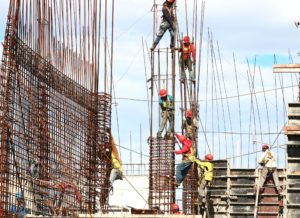Generic solutions
Transport
Global transportation is responsible for 24% of direct CO2 emissions from fuel combustion.(1) Road vehicles are responsible for almost ¾ of CO2 emissions from transport. Emissions from shipping and aviation continue to rise at an alarming rate; aviation being the most carbon-intensive mode of transport. The aid sector relies heavily on transport for delivering its missions, whether it be commuting, staff travel or freight transport. However, by adopting bold measures based mainly on sobriety, modal shift, optimisation, mutualisation and alternative fuels, emissions can be greatly reduced without affecting the organisations’ mission.
Discover all solutions here.
-
Business travel
-
Commuting
-
Freight
-
Fleet
Coming soon
Procurement
In the aid sector, emissions from the procurement of goods and services make up about 40 – 70% of an organisation’s carbon footprint. These emissions stem both from the procurement of goods & services for the organisation itself, as well as from the distribution of food, non-food, or medical items to beneficiaries. The latter usually makes up by far the largest share. Organisations can improve demand planning in order to avoid air shipment and surplus items, identify low-carbon alternatives, establish environmental procurement criteria and engage with suppliers to decarbonise. In addition, making structural changes to operations or ways of working can reduce the need for certain items or services. Specific solutions for certain key items, such as food, non-food, medical items, or packaging exist.
Discover all solutions here.
-
Demand planning
Coming soon
-
Procurement criteria
-
Supplier engagement
-
Structural changes
Coming soon
-
Packaging
-
Food items
-
Non-food items
-
Medical items
Coming soon
Energy and buildings
The building sector, including construction and operation, accounted for 36% of global energy consumption and 37% of CO2 emissions in 2019. (2) Electricity consumption in building operations represents nearly 55% of global electricity consumption. The buildings sector emission increase is due to a continued use of coal, oil and natural gas for heating and cooking combined with higher activity levels in regions where electricity remains carbon intensive. Energy transition relies on reducing energy consumption, (thanks to energy sobriety and efficiency), sustainable construction and renovation (including passive measures), and the use of renewable energy.
Discover all solutions here.
-
Energy consumption
-
Construction and renovation
-
Renewable energy
Digital
The impact of digital technologies on climate and the environment has increased in recent years. However, they are often underestimated and represent a risk if not properly considered in climate roadmaps. The energy intensity of the Information and Communication Technology (ICT) sector is growing by 4% per year. (3) 45% of the greenhouse gases generated by digital activities are related to the manufacture of IT equipment. Yet, digital technologies became critical for reducing emissions from business travel. By rationalising practices and the amount of digital equipment, it is possible to limit the growth in the climate impact of digital within organisations.
Discover all solutions here.
-
Digital equipment
Coming soon
-
Digital uses
Waste
The world generates 2.01 billion tonnes of municipal solid waste annually, with at least 33 percent of that—extremely conservatively—not managed in an environmentally safe manner. Consequences for the environment and human health are dramatic: pollution of soil and water ressources by various chemical substances and greenhouse gas emissions linked to decomposition or combustion. Solid waste management generates about 1.6 billion CO2e, or 5% of global emissions. Only 13.5% of this waste is recycled. 33% ends up in open dumps. (4)
Sustainable waste management is based on a life-cycle approach: from avoidance, reduction, reuse, repair and finally recycling, treatment and proper disposal. It is often necessary to develop actions by type of waste because not all waste has the same specificity (food, general, electronic, garage, hazardous, medical).
Discover all solutions here.
-
Waste management
-
Electronic waste
-
Food waste
Coming soon
-
Garage waste
Coming soon
-
General waste
Coming soon
-
Medical waste
Coming soon
-
Hazardous waste
Coming soon
Water
Water systems are a major source of greenhouse gas emissions: water utilities worldwide emit the same volume of greenhouse gas as the global shipping industry. (5) Half of the world’s population could be living in areas facing water scarcity by as early as 2025. (6) Water pollution has risen across three continents, placing hundreds of millions of people at risk of contracting life-threatening diseases like cholera and typhoid. (7) However, solutions exist to better preserve water resources, both in quantity and quality, and to reduce greenhouse gas emissions, often at low cost.
Discover all solutions here.
-
Water preservation
Coming soon
-
Sanitation
Coming soon
Ecosystems
Nature is critical to human survival. Yet, it is under increasing stress. Deforestation and desertification – caused by human activities and climate change – affect the lives and livelihoods of millions of people. Around 1 million animal and plant species are threatened with extinction. The health of our planet also plays an important role in the emergence of zoonotic diseases. (8) Forests, peatlands, wetlands, ocean and coastal ecosystems represent globally significant carbon stores. Their protection and restoration offer cost-effective and proven ways to mitigate climate change. Such ecosystems can also serve as natural buffers against climate extremes and other disasters and strengthen adaptation to climate change. (9) Organisations can support or implement nature conservation initiatives, adopt good land management and nature-friendly practices and help reduce pollution.
Discover all solutions here.
-
Nature-friendly practices
-
Raising awareness
Coming soon
-
Bring back nature
Coming soon
Transversal
There are important cross-cutting practices that organisations and professionals can adopt to reduce and limit their carbon footprint and that of others in the short and long term. This includes, but is not limited to, green office practices, choice of banks and how to use pension or investment funds. It is a way of engaging and encouraging sustainability, being consistent across its activities, improving an organisation’s image, inspiring its network and strengthening climate action.
Discover all solutions here.
-
Behaviour change
Coming soon
-
Green office – Individual
-
Green office – Organisational
-
Investment and pension funds
-
Banks
Service delivery models
When reducing an organisation’s carbon footprint, it is necessary to review the way services are delivered. This means that the operational model of the organisation – at all stages of the process and structure – must be considered as an opportunity to reducing greenhouse gas emissions and taken into account in a climate strategy. Solutions include optimising resources, avoiding duplication and opting for a more sustainable equipment lifecycle. For example, in the case of the health sector, solutions may consist of rethinking the quantity or the way medicines are prescribed, centralising/decentralising hospitals or introducing teleconsultations.
Discover all solutions here.
Strategy and implementation
To decarbonise an organisation, it is essential to have an integrated strategy and implementation that ensures emission reductions in a cross-cutting and long-term manner. Such a strategy will allow moving from discourse to action, from conceptual to operational, at different levels.
Key steps include:
1) a clear commitment to change from decision-makers;
2) mobilisation of the necessary means and capacities (environmental focal point, budgetary resources, expertise);
3) definition of clear and achievable orientations and objectives;
4) development of a roadmap (identification of solutions, scenarios, feasibility assessments);
5) a concrete and precise multi-year action plan (with indicators);
6) empowerment of the organisation’s staff at all levels (leaders, directors, managers, employees, consultants) by integrating the climate objectives into their job descriptions and including performance indicators (allowing for accountability);
7) monitoring and control of the implementation.
Discover all solutions here.
Cover photo © Andres Siimon/Unsplash.





























